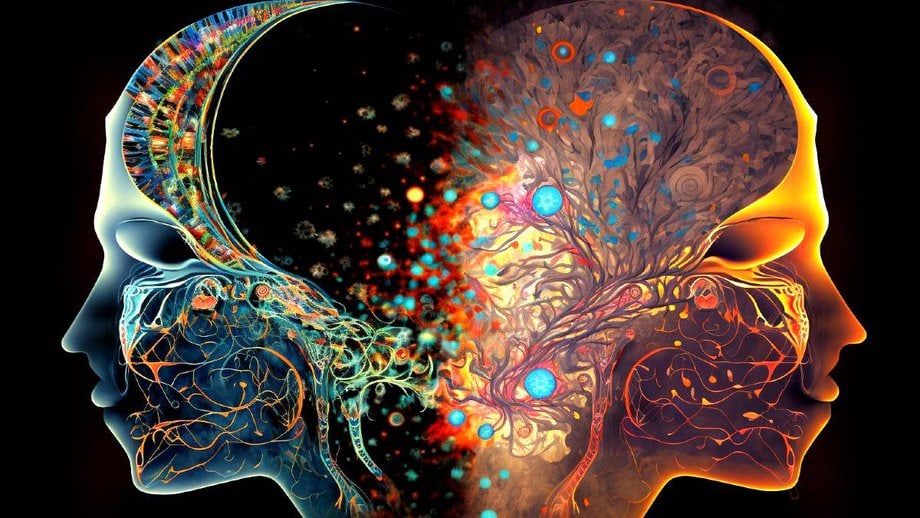Enhancing Mind-Body Connection Through Progressive Muscle Relaxation

Are you looking to strengthen the connection between your mind and body? Look no further!
In this article, we will guide you through the practice of progressive muscle relaxation, a powerful technique that can enhance your mind-body connection. By actively engaging your muscles and releasing tension, you can experience a deeper sense of calm and balance.
In just a few simple steps, we will show you how to incorporate this practice into your daily routine for maximum benefits.
Let’s get started!
Key Takeaways
- Physiological changes during progressive muscle relaxation such as slower heart rate, decreased blood pressure, and slower and deeper breathing
- Release of tension and tightness in muscles leading to increased awareness of body sensations and enhanced mind-body connection
- Overall well-being promotion through engaging in mindfulness exercises, recognizing and processing emotions, and effective stress management
- Benefits of progressive muscle relaxation include reduction of tension in the body, deep sense of relaxation, increased mindfulness, and improved mental clarity
The Science Behind Progressive Muscle Relaxation
To better understand the benefits of progressive muscle relaxation, you should learn about the science behind it.
The physiology of relaxation plays a crucial role in the mind-body connection. When you engage in progressive muscle relaxation, your body enters a state of deep relaxation, causing a series of physiological changes.
Firstly, your heart rate slows down, blood pressure decreases, and your breathing becomes slower and deeper. This helps to calm your mind and reduce the effects of stress on your body.
Secondly, progressive muscle relaxation helps to release tension and tightness in your muscles, promoting a sense of physical and mental relaxation. By targeting specific muscle groups, you can become more aware of the sensations in your body, enhancing the mind-body connection and promoting overall well-being.
Understanding the Mind-Body Connection
Understanding how your thoughts and physical sensations are intertwined can help you achieve a greater sense of well-being. It’s important to recognize that your mind and body are connected in a way that impacts your overall health and happiness. By practicing mindfulness exercises and embracing a holistic approach to wellness, you can tap into this mind-body connection and experience profound benefits.
Consider these five key aspects of the mind-body connection:
- Mindfulness exercises: Engaging in activities like meditation and deep breathing can help you cultivate awareness of your thoughts and physical sensations.
- Emotional well-being: Recognizing and processing your emotions can have a positive impact on your physical health.
- Stress management: Learning to manage stress effectively can improve both your mental and physical well-being.
- Physical health: Taking care of your body through exercise, proper nutrition, and adequate rest can support your mental well-being.
- Self-care: Prioritizing self-care activities, such as practicing relaxation techniques or engaging in hobbies, can nurture the mind-body connection and promote overall wellness.
Benefits of Progressive Muscle Relaxation
By practicing progressive muscle relaxation, you can quickly reduce tension in your body and experience a deep sense of relaxation. This technique involves tensing and then releasing different muscle groups to increase mindfulness and reduce stress.
As you focus on each muscle group, you become more aware of the sensations in your body, promoting a heightened sense of mindfulness. By intentionally relaxing your muscles, you signal to your brain that it is safe to let go of tension and stress.
This process not only helps you physically relax, but also calms your mind, allowing you to let go of racing thoughts and worries. Progressive muscle relaxation is a simple yet effective technique that can be easily incorporated into your daily routine to bring about a sense of calm and well-being.
Step-by-Step Guide to Progressive Muscle Relaxation
In this discussion, we will explore the benefits of relaxation, effective relaxation techniques, and ways to incorporate relaxation into your routine.
Relaxation offers numerous advantages such as reducing stress, improving sleep quality, and enhancing overall well-being.
By implementing effective relaxation techniques, you can actively manage stress and promote relaxation.
Additionally, we will provide practical tips on how to seamlessly integrate relaxation practices into your daily routine for maximum benefit.
Benefits of Relaxation
Take a moment to consider the benefits of relaxation for your mind and body. When life gets hectic and stress starts to take its toll, finding ways to relax is essential.
Here are some benefits of relaxation that you can experience:
- Reduced stress levels: Relaxation techniques, such as mindfulness, can help you manage and reduce stress, allowing you to feel calmer and more at ease.
- Improved mental clarity: Giving your mind a break through relaxation can improve focus, concentration, and overall mental clarity.
- Enhanced mood: Relaxation promotes the release of endorphins, the feel-good hormones, which can uplift your mood and increase feelings of happiness.
- Better sleep quality: Relaxing before bedtime can help you unwind and prepare your body for a restful night’s sleep.
- Boosted immune system: Chronic stress can weaken the immune system, but relaxation techniques can help strengthen it, keeping you healthier.
Effective Relaxation Techniques
To effectively relax, you can try deep breathing exercises that help calm your mind and body. Deep breathing involves taking slow, deep breaths in through your nose and exhaling slowly through your mouth. This technique helps to activate your body’s relaxation response, reducing stress and promoting a sense of calm.
As you focus on your breath, you can also incorporate guided imagery, which involves visualizing peaceful and serene scenes in your mind. This technique can further enhance relaxation by engaging your imagination and promoting positive emotions.
Incorporating Relaxation Into Routine
Try incorporating relaxation into your daily routine by setting aside a few minutes each day for deep breathing and guided imagery exercises. These techniques can help you manage stress and improve your overall well-being.
Here are five relaxation techniques you can try:
- Progressive Muscle Relaxation: Tense and relax your muscles, starting from your toes and working your way up to your head.
- Mindfulness Meditation: Focus on your breath and bring your attention to the present moment.
- Yoga: Practice gentle stretching and poses to release tension in your body.
- Listening to Relaxing Music: Find soothing tunes that help you unwind and calm your mind.
- Taking a Warm Bath: Allow the warm water to relax your muscles and create a sense of tranquility.
Incorporating these relaxation techniques into your routine can help you manage stress and promote a sense of peace and relaxation in your daily life.
Incorporating Progressive Muscle Relaxation Into Your Daily Routine
Start incorporating progressive muscle relaxation into your daily routine to enhance your mind-body connection. By engaging in this practice, you can experience the numerous benefits it offers.
One way to begin is by incorporating mindful movement into your routine. This involves performing simple exercises, such as yoga or tai chi, while focusing on your breath and the sensations in your body. By combining movement with relaxation techniques, you can deepen your mind-body connection and promote a sense of calm and well-being.
Another effective technique to enhance this connection is through guided imagery. This involves using your imagination to create a calming and peaceful mental image, allowing your body to relax and release tension.
Tips for Deepening the Mind-Body Connection
To deepen your mind-body connection, there are several techniques you can try.
First, focus on your breath and practice deep breathing exercises to promote relaxation.
Visualizing healing energy can also be helpful, as you imagine a warm, healing light surrounding and nourishing your body.
Lastly, incorporating mindfulness meditation into your routine can help you cultivate a greater awareness of the present moment, fostering a stronger mind-body connection.
Breathing Techniques for Relaxation
One effective way to enhance your mind-body connection is by practicing deep breathing techniques for relaxation. Deep breathing can help you reduce stress levels and promote a sense of calmness and well-being.
Here are five breathing techniques that you can try:
- Box breathing: Inhale for a count of four, hold your breath for a count of four, exhale for a count of four, and then hold your breath again for a count of four. Repeat this pattern several times.
- 4-7-8 breathing: Inhale deeply for a count of four, hold your breath for a count of seven, and exhale slowly for a count of eight. Repeat this sequence a few times.
- Diaphragmatic breathing: Place one hand on your chest and the other on your abdomen. Take slow, deep breaths, focusing on expanding your abdomen as you inhale and contracting it as you exhale.
- Alternate nostril breathing: Close your right nostril with your right thumb and inhale deeply through your left nostril. Then, close your left nostril with your right ring finger and exhale through your right nostril. Repeat this process, alternating nostrils.
- Belly breathing: Lie down on your back and place your hands on your abdomen. Take slow, deep breaths, allowing your belly to rise and fall with each breath.
Incorporating these breathing techniques into your daily routine can provide you with a valuable tool for stress relief and relaxation. Take a few moments each day to practice deep breathing and experience the benefits it can bring to your mind and body.
Visualizing Healing Energy
Now that you’ve mastered the art of deep breathing, let’s explore the power of visualizing healing energy.
By harnessing the mind-body connection, you can tap into the healing vibrations that reside within you.
Start by finding a quiet and comfortable space where you won’t be disturbed. Close your eyes and take a few deep breaths to center yourself.
Now, imagine a warm, glowing light surrounding your body. This light is filled with healing energy, vibrating with positivity and rejuvenation.
As you continue to visualize this healing energy, imagine it flowing through every cell of your body, bringing balance and harmony.
Feel the vibrations as they gently cleanse and heal your mind, body, and spirit.
Stay in this state of energy visualization for as long as you need, allowing the healing vibrations to work their magic.
Incorporating Mindfulness Meditation
By incorporating mindfulness meditation into your daily routine, you can cultivate a greater sense of presence and awareness in each moment. Mindfulness techniques are powerful tools for improving focus and bringing a sense of calm to your busy life.
Here are five benefits of incorporating mindfulness meditation:
- Increased self-awareness: Mindfulness meditation helps you become more attuned to your thoughts, emotions, and bodily sensations.
- Reduced stress: Taking time to be present and focus on your breath can help alleviate stress and promote relaxation.
- Improved mental clarity: Regular practice of mindfulness meditation can enhance your ability to concentrate and make decisions.
- Enhanced emotional well-being: Mindfulness meditation can help you better understand and manage your emotions, leading to greater overall happiness.
- Better physical health: Mindfulness meditation has been shown to have numerous health benefits, such as reducing blood pressure and boosting the immune system.
Make mindfulness meditation a part of your daily routine and experience the positive effects it can have on your focus and well-being.
Exploring Different Variations of Progressive Muscle Relaxation
Try out various versions of progressive muscle relaxation to find the one that suits you best. This technique involves tensing and relaxing different muscle groups to promote relaxation and relieve stress. By focusing on each muscle group, you can become more aware of tension and learn to release it. Here are three variations you can try:
| Variation | Muscle Group | Technique |
|---|---|---|
| 1 | Upper Body | Start with your hands and forearms, gradually moving up to your shoulders and neck. |
| 2 | Lower Body | Begin with your toes and work your way up to your calves, thighs, and glutes. |
| 3 | Full Body | Start with your toes and systematically move up through each muscle group in your body. |
Experiment with these variations and see which one brings you the most relaxation and relief. Remember, the goal is to release tension and promote a greater sense of calm and well-being.
Frequently Asked Questions
How Long Does It Take to See Results From Practicing Progressive Muscle Relaxation?
You can start seeing results from practicing progressive muscle relaxation within a few weeks. It is effective for various conditions like anxiety, insomnia, and chronic pain. Stick to the routine for best outcomes.
Can Progressive Muscle Relaxation Help With Specific Medical Conditions or Symptoms?
Progressive muscle relaxation can help with specific medical conditions or symptoms. It has been shown to be effective for chronic pain, anxiety, and stress. Give it a try and see if it works for you.
Are There Any Potential Side Effects or Risks Associated With Progressive Muscle Relaxation?
There may be potential side effects and risks associated with progressive muscle relaxation. It’s important to consult with a healthcare professional to understand how it may affect you personally.
Can Progressive Muscle Relaxation Be Practiced by Anyone, Regardless of Age or Physical Ability?
Yes, anyone can practice progressive muscle relaxation regardless of age or physical ability. There are no age limitations, and modifications can be made for physical limitations to ensure everyone can benefit from this technique.
How Does Progressive Muscle Relaxation Compare to Other Relaxation Techniques, Such as Meditation or Deep Breathing Exercises?
Comparing relaxation techniques, progressive muscle relaxation is a unique approach that targets specific muscle groups to induce relaxation. It has been found to be effective in reducing stress and promoting mind-body wellness.








